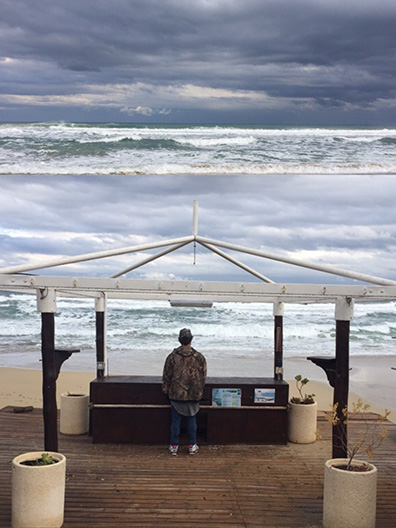
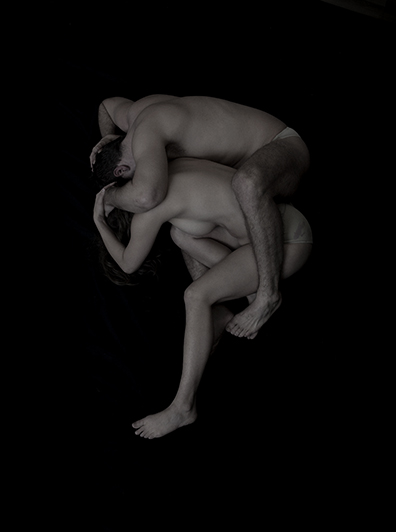
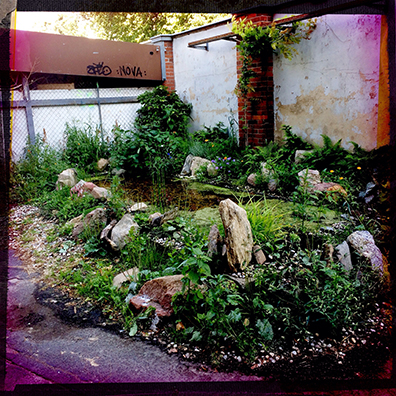
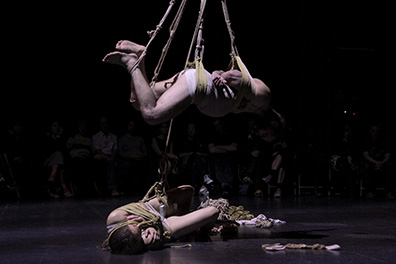
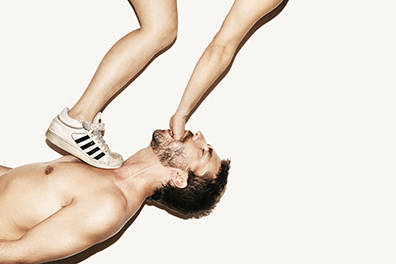
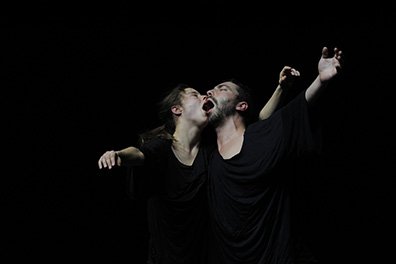
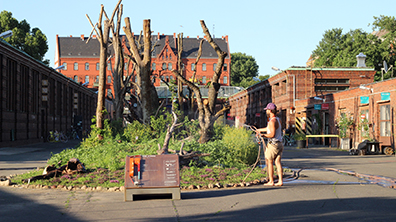
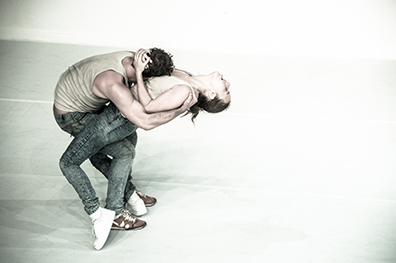
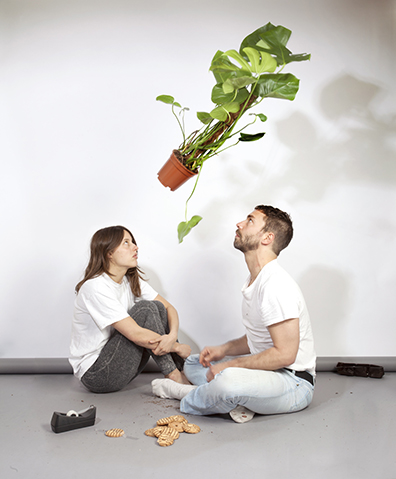
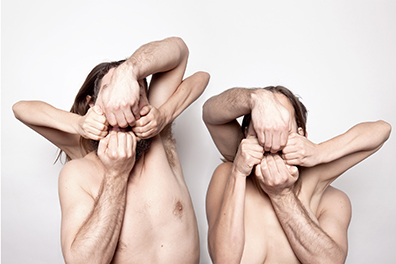
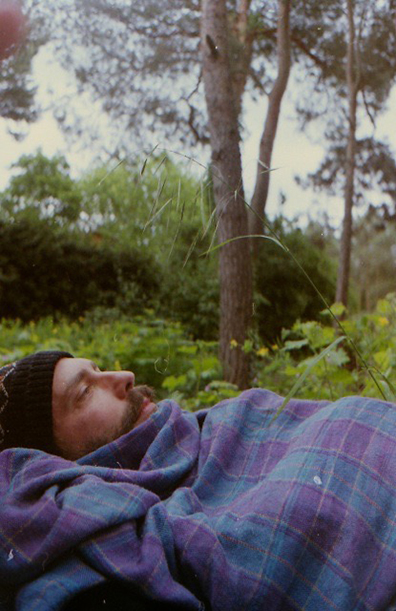
human gardening
Jared Gradinger
Sep 18 – Sep 29, 2017
‘Where there is form there is nature, where humans and nature interact there is a garden. (Machaelle Small Wright)
For the past few years, I have been shifting my attention to the ‘natural world’ and the unseen energies that are there to support it/us. This has taken me on a journey, where amongst other things, I have been drawn to create gardens. Gardens as space, as performance, as choreography, as social art. These creations were developedusing the ideas of co-creative science. If traditional science is defined as man’s study of reality and how it works, then co-creative science can be defined as the study of reality, how it works from the perspective of nature by human/nature working together in a partnership. I am now wondering how we can apply this system of perceiving (and working with) these realities to create our ‘art’ and support our processes and practices.
How can we stop speaking of the world and let the world speak to us?
Is it possible to be educated by nature about reality? What do we need to cultivate or leave behind in order to perceive this information? How can we develop our (inner) organs of perception? is it possible to communicate or learn from something that is not human, even something we don’t perceive as living?
A human calls for a garden to exist.
Definition:
Garden: planned space set aside for the display, cultivation and enjoyment of plants.
Gardener: one who attempts to conquer nature by restoring a balance that accommodates their definition of a garden and how it functions.
or
Garden: anything initiated by humans, given its purpose and direction by humans and maintained with the help of humans.
Gardener: one who works in a conscious partnership with nature to create an environmentally balanced biosphere on all levels - seen and unseen- that promotes a new support system for all that participates.
A Garden exists wherever humans define, initiate and interact with form to create a specialized environment.
How can we approach our work and artistic practices as if we were creating a garden? Not just any garden; a co-creative garden working in direct partnership with nature and its inherent intelligence. Co-creative science establishes a direct, active and personal partnership between ‘you’ and ‘nature’ for working together with intention. It is working with the inherent intelligence in nature to create a ‘balanced’ state or a state that is in ‘flow’.
In this module, we see how we can give IN to something other (nature) in order to find new starting points, other forms and new directions. We will see if it is possible to create a clear purpose/direction and at the same time allow ourselves to be changed.We are not necessarily talking about including ‘nature’ in our work, rather acknowledging the fact that it is already there, as a reality, an intelligence and as everything we can perceive with our five senses. So how can we work with it rather than it for us?
This module is meant as a laboratory to experiment with a different way of working; a different perspective on reality and developing new starting-points. This lab is an experiment, focused on cultivating a different reaction to reality in order to create our work in unknown and surprising ways.
How can we articulate our desires and still leave room for the unknown?
We will be working in any shape, format or form that is desired/required; as group, as ‘individuals’, with the non-human, more than human. We will be working in collaboration with time, with space and with nature. I am not here to be the teacher, rather the facilitator of experimenting with other ways of working and forms of collaboration. I will provide the space. Inside. Outside.
You will provide the direction and purpose of what you intend to ‘create’ and we will do our best to work with nature as the provider of your means and matter and action. We will attempt to treat our projects and practices and life as we would a garden.
––––––––––––––––––––––––––––––––––––––––––––––––––––––––
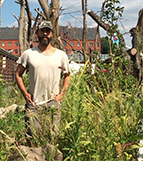 Jared Gradinger is an artist and performer living in berlin since 2002. In his work, he is constantly searching for new forms of collaborations with choreographers, visual artists, children, Nature etc. He is a founding member of Constanza Macras/Dorky Park (2002-2009). Since 2009, he has created 6 works with Angela Schubot on the topic of de-bordering the body and searching for new forms of co-existence. He continues to work with Schubot in the form of pieces, workshops, collaborations and touring internationally, including a retrospective of their work presented in the Hebbel am Ufer/Berlin Sudpol/Luzern and Tmuna/Tel Aviv. He has an ongoing relation with Jeremy Wade, working as performer as well as writer and outside eye. In 2012, he formed the Social Muscle Club with Emerson/Rothmund/Savoldelli. SMC is a group that creates and produces an evolving social artistic training programme in the form of performative events designed to develop our skills.
Jared Gradinger is an artist and performer living in berlin since 2002. In his work, he is constantly searching for new forms of collaborations with choreographers, visual artists, children, Nature etc. He is a founding member of Constanza Macras/Dorky Park (2002-2009). Since 2009, he has created 6 works with Angela Schubot on the topic of de-bordering the body and searching for new forms of co-existence. He continues to work with Schubot in the form of pieces, workshops, collaborations and touring internationally, including a retrospective of their work presented in the Hebbel am Ufer/Berlin Sudpol/Luzern and Tmuna/Tel Aviv. He has an ongoing relation with Jeremy Wade, working as performer as well as writer and outside eye. In 2012, he formed the Social Muscle Club with Emerson/Rothmund/Savoldelli. SMC is a group that creates and produces an evolving social artistic training programme in the form of performative events designed to develop our skills.
His latest research involves developing a co-creative, artistic relationship with Nature in the form of gardens and other social/artistic practices. One such garden is the Impossible Forest, located in the Uferstudios in Berlin Wedding, and created in the frame of Tanznacht Berlin 2016. This garden is a shared space for development in collaboration with nature; a social choreography offering an encounters with the human and non human, directing attention to the cycle of blossoming and decay. Over the past few years he has begun working with artists as dramaturg and artistic advisor. Jared has worked with various artists such as Liz Rosenfeld, Meg Stuart, Aleesa Cohene, William Forsythe, Rachel De Joode, Margret Sara Gudjonsdottir, Julian Rosenfeldt, Leyland Kirby, Mark Jenkins, Pictoplasma, John Zorn Les Grandes Traversees, Laurie Young amongst others.
website
www.jaredgradinger.com
––––––––––––––––––––––––––––––––––––––––––––––––––––––––
photos:
